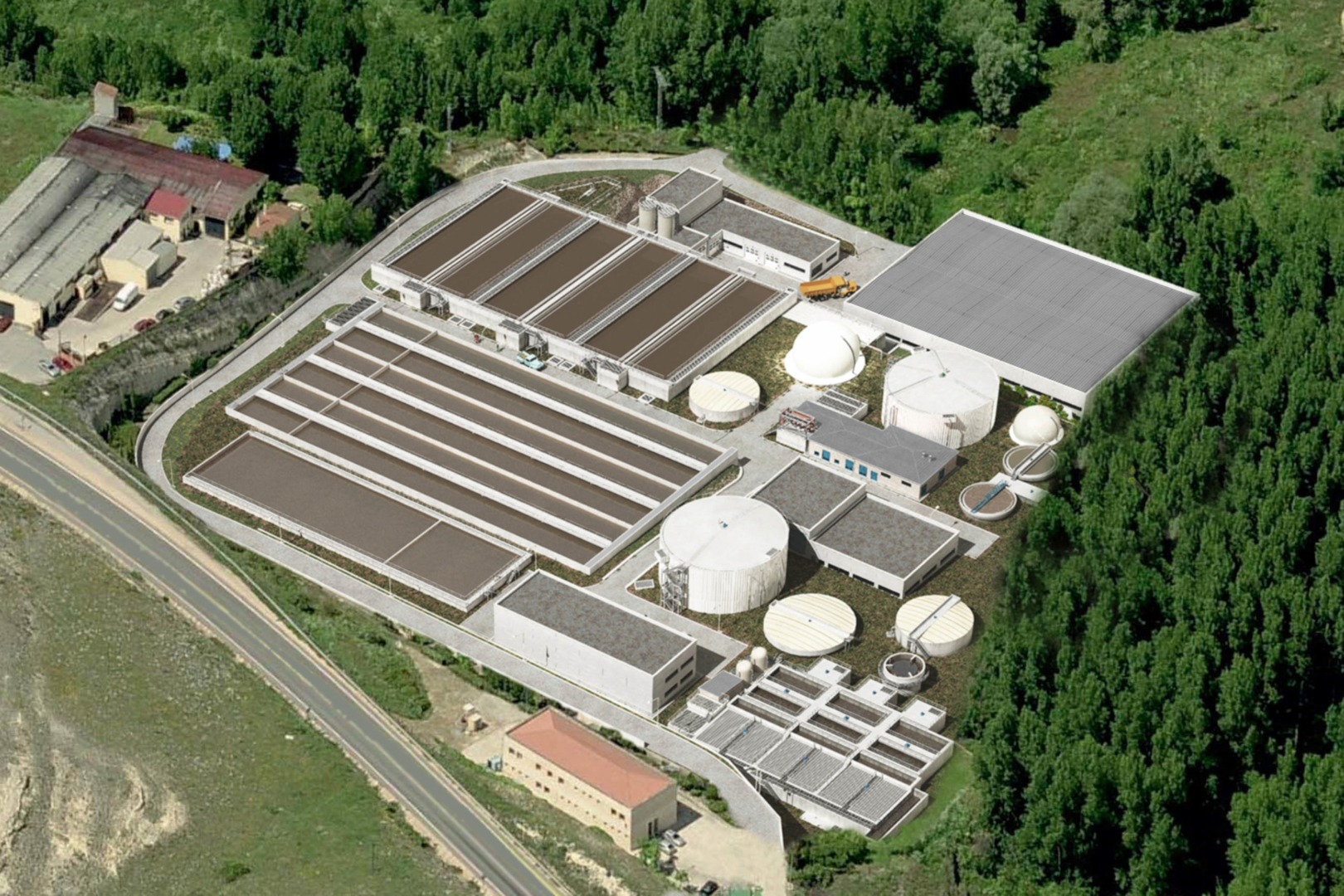Customer
OHL – GS Inima
Country
pain
Year
2012
Category
Bidding
Description
Drafting of the construction project, execution of the works and exploitation of the “expansion of the Segovia WWTP”
Treatment Flow
Daily medium: ** m3/d, Half time: 3.026,45 m3/h, Maximum hours: 12.458 m3/h
Equivalent population
240.240 pop. Eq.
Characteristics
Water line formed by; Finishing work, Leachate tank and coarse pit elevation, Existing coarse pit, Coarse solids pre-roughing, Coarse expansion well, Coarse solids roughing, Rough water lift to coarse roughing, Coarse solids roughing , De-sanding-degreasing, Storm tank, Elevation of pre-treated water to primary treatment, Chemical physical treatment, Measurement and regulation of feed flow to biological treatment, Biological treatment, Storage tank of treated water.
Sludge line formed by; Pumping of primary sludge to sieving, Pumping of excess biological sludge to existing flotation thickener, Pumping of excess biological sludge to new flotation thickener, Recirculation of sludge to existing biological reactors, Recirculation of sludge to new biological reactor, Sieving of Primary Sludge, Sieve Sludge Pumping to Existing Gravity Thickener, Sieve Slurry Pumping to New Gravity Thickener, Existing Gravity Circular Thickener, New Gravity Circular Thickener, Excess Biological Sludge Thickening, Existing Thickened Slurry Mix, New thickened sludge, Pumping of thickened mixed sludge to existing digester, Pumping of thickened mixed sludge to new digester, Hydrogen sulfide reduction system in digesters by dosing of ferric chloride, Existing anaerobic digestion, New anaerobic digestion, Storage of digested sludge, Dehydration sludge storage dehydrated sludge.
Gas line formed by; Gas storage, Burning of excess gases.
Energy recovery formed by; Existing 247 kW biogas motor generator, New 264 kW biogas motor generator, Francis Turbine for a nominal flow of 1000 l / s and a net head of 14.00 m, with an electric power of 112.40 kW.
Scope
- Process calculation.
- Hydraulic design.
- Study of operating costs.
- Architectural and odor management solutions
- Study of the interferences with the existing WWTP during the works and measures to maintain and ensure compliance with the discharge requirements.
- Preparation of plans.
- Preparation of measurements and budgets.
- Preparation and integration of the definitive tender project.



